Tumor growth depends on oxygen and nutrients supplied by blood vessels. Tumor has abundant blood vessels inside so the elimination of the vessels can inhibit tumor growth and metastasis. Direct injection of chemotherapeutic drugs or embolic agent into the tumor from the tumor-feeding artery can block the blood vessels, cut off the energy supply, and then the tumor will die of ischemia, hypoxia and starvation. On the other hand, the chemotherapeutic drug is concentrated in the tumor and release slowly, exerting the maximum anticancer effect, while it has little effect on the whole body.
Cancer Vascular Intervention (CVI) includes Transcatheter Arterial Infusion Chemotherapy (TAI), Transcatheter Arterial Embolization (TAE) and Transcatheter Arterial Chemoembolization (TACE).
TAI is a procedure to inject chemotherapy drugs into the tumor through a special thin catheter along the blood supply artery under the guidance of imaging equipment, so as to increase the drug concentration in the tumor tissue and enhance the anti-tumor effect.
Principle
After the perfusion of chemotherapy drugs, the drugs directly attack the tumor with longer time and higher concentration. In theory, 10 times higher drug concentrations in tumor cells can produce stronger drug effect of more than 100 times. In this way, the local high drug concentration can achieve a significant effect in killing tumor cells, and reduce the adverse reactions in the whole body.
Indications: advanced tumors in all kinds of solid viscera, bone and soft tissue or recurrent and metastatic tumors after surgery or radiotherapy, such as liver cancer, lung cancer, head and neck cancer, breast cancer, bile duct cancer, pancreatic cancer, esophageal cancer, etc.
Features
When the drug enters the tumor after a few seconds, the dose is 1/2~1/5 of that given intravenously.
TAE is a procedure in which an embolic agent is injected into the target artery through a catheter to block the nutrition supply for the tumor.
Indications
The embolization of primary or metastatic liver cancer, hepatic hemangioma, kidney cancer, pelvic tumor, as well as hemostasis of massive hemorrhage of nasopharyngeal cancer, lung cancer, digestive tract and pelvic tumor.
TACE is a combination of TAI and TAE, using the mixture of chemotherapeutic drugs and embolic agent to achieve the effect of chemoembolization.
Advantages
Guided and monitored by imaging equipment, CVI can accurately and directly reach the lesion without major trauma. Therefore, it has the advantages of accuracy, safety, efficiency, wide indications and fewer complications. Nowadays, it has become the first choice for the treatment of some diseases.
(1) Minimally invasive
Interventional treatment is a minimally invasive procedure, involving as little incision into the body as about 1 mm. Thirty minutes after the procedure, patient can get out of bed and then recover well after eight hours. No special precaution is required, so patients can immediately return to normal work and life. The treatment not only improves the quality of life of patients, but also reduces the burden on their family.
(2) Highly effective
Arterial drug infusion can directly deliver drugs to the tumor tissue through the artery with a large dose and good therapeutic effect. Vascular embolization can inhibit the development of the tumor and make it smaller, allowing the second operation opportunity for patients, and even block the blood supply of the tumor for starvation.
The primary liver cancer is known as “the king of cancer", mainly because only 1/5 of patients with primary liver cancer have the chance of operation, and 4/5 of patients can only live 3-6 months. CVI can effectively stop lesions from growing by comprehensive treatment such as TAE, making it possible for those 4/5 patients to live longer. With the help of CVI, primary liver cancer is no longer "the king of cancer".
(3) Fewer side effects
The drug directly works on the lesion, greatly raising the drug concentration in the lesion, enhancing curative effect and reducing drug dosage. Most chemotherapy drugs are absorbed by tumor tissue and fewer drugs flow with blood. After detoxification metabolism by liver, normal tissue is exposed to a lesser amount of drug, reducing systemic side effects. TAE is a physical therapy without toxic side effects, so that it can be performed several times and it will not affect the quality of life.
(4) Safe
Local anesthesia is performed for most patients during the procedure instead of general anesthesia, lowering the risk of anesthesia.
(5) Reasonable price
Small injury and fast recovery can reduce the duration of hospital stays, lowering the expenses during hospitalization.
(6) More accurate
Under the precise guidance of medical imaging equipment, accurate positioning can be realized. Our hospital has DSA+MDCT compound interventional unit, which can make the treatment more accurate and minimize the damage to normal tissues through double guidance.
(7) Good for those who cannot be operated
For the elderly and critically ill patients who cannot tolerate the operation or those who have no chance of operation, the intervention therapy is a good option. It is suitable for various tumors and can also be used in combination with other therapies.
Cases
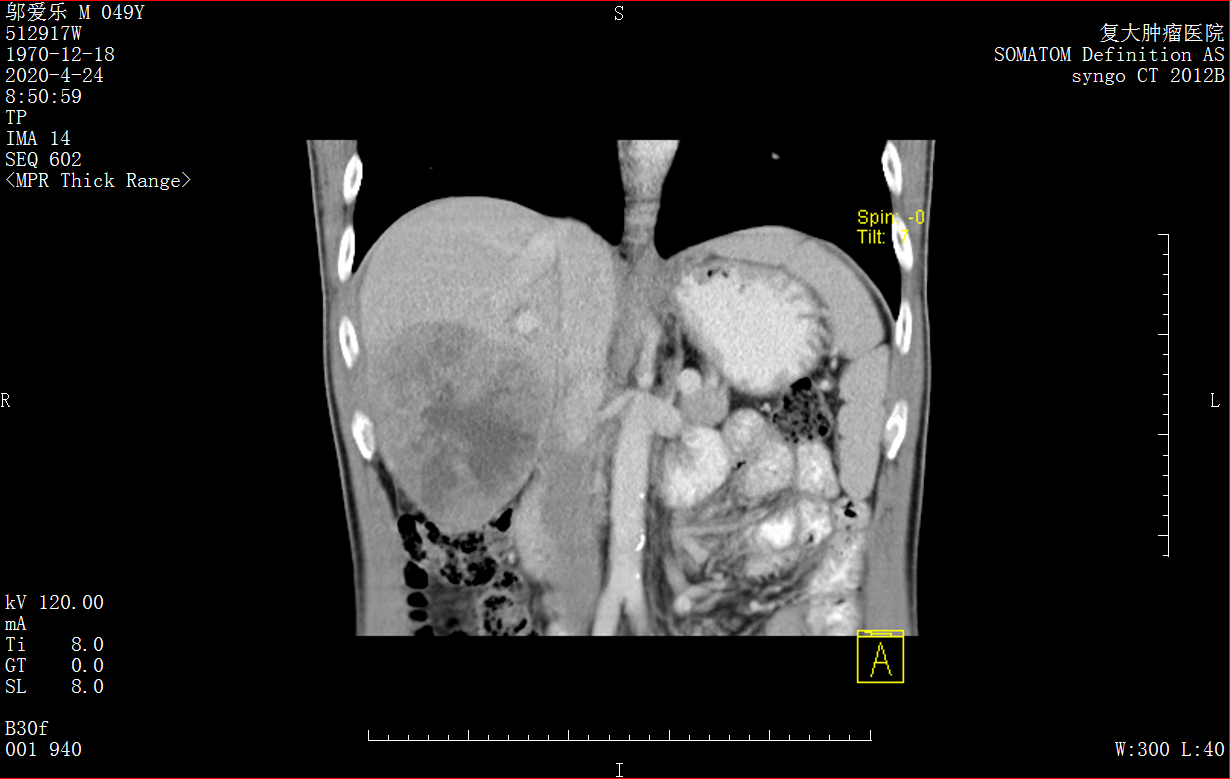
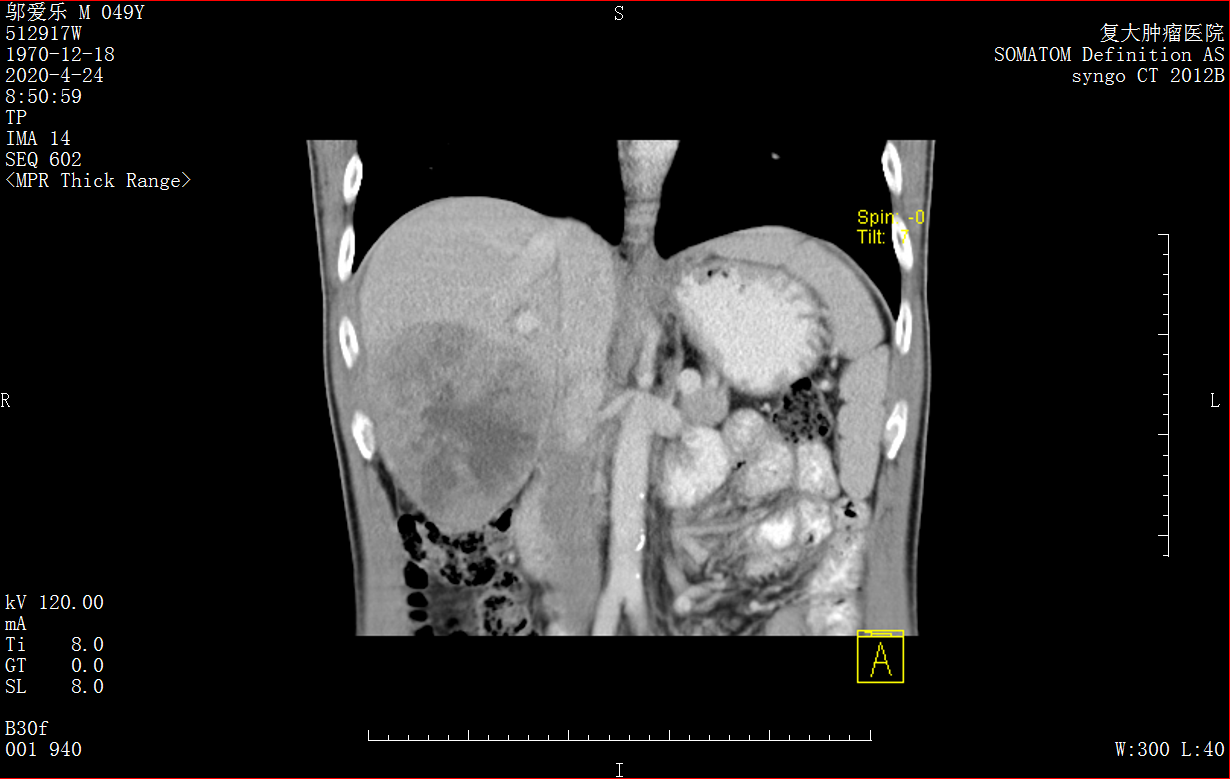
Contrast-enhanced CT scan on huge liver cancer before procedure
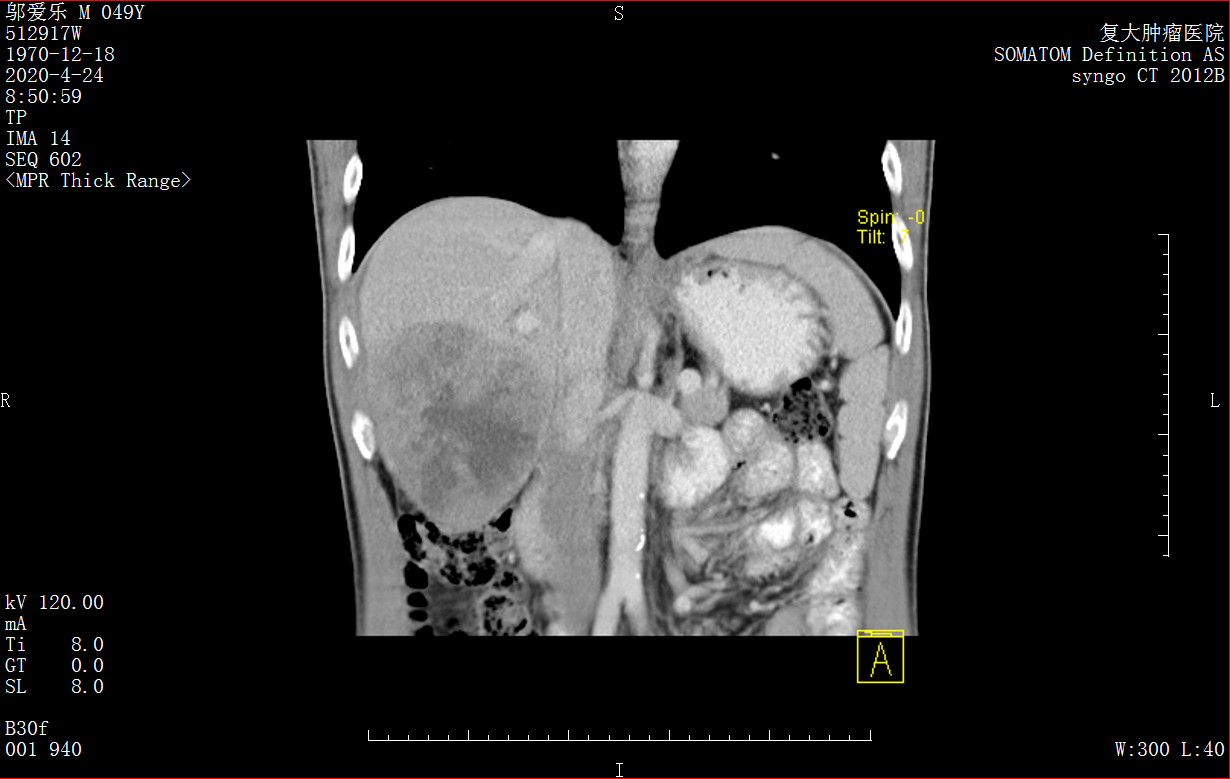
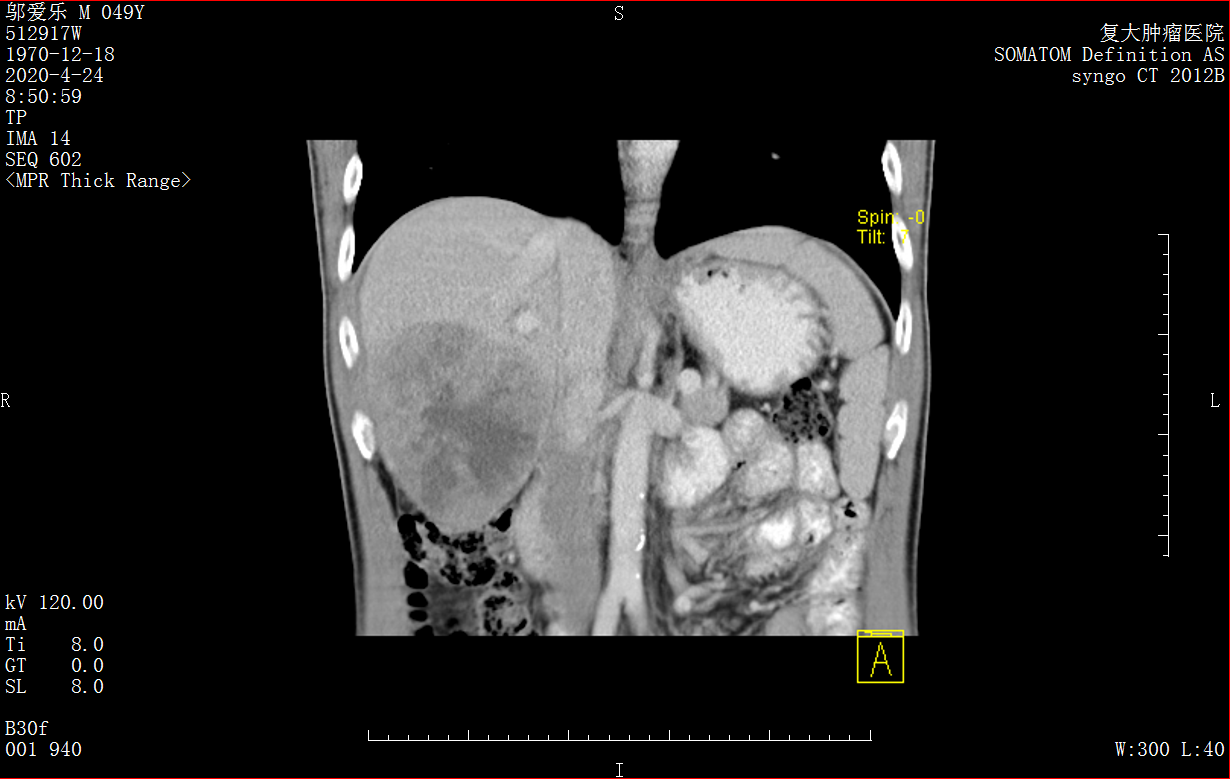
Intraoperative DSA shows a huge tumor in right lower hepatic lobe is stained. To find the best place for embolization, contrast-enhanced MDCT is performed.
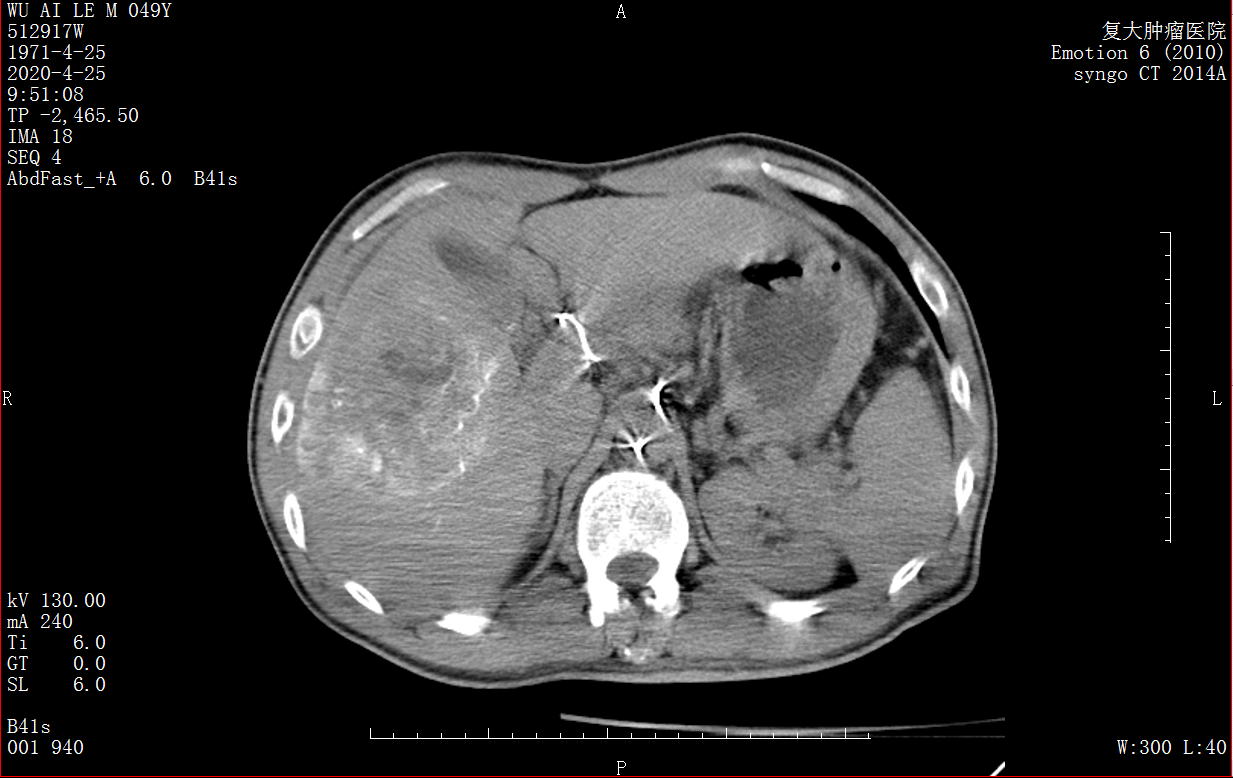
Intraoperative contrast-enhanced MDCT shows that the catheter head is in the best position; only enhancement in the tumor but no enhancement in normal liver tissue.
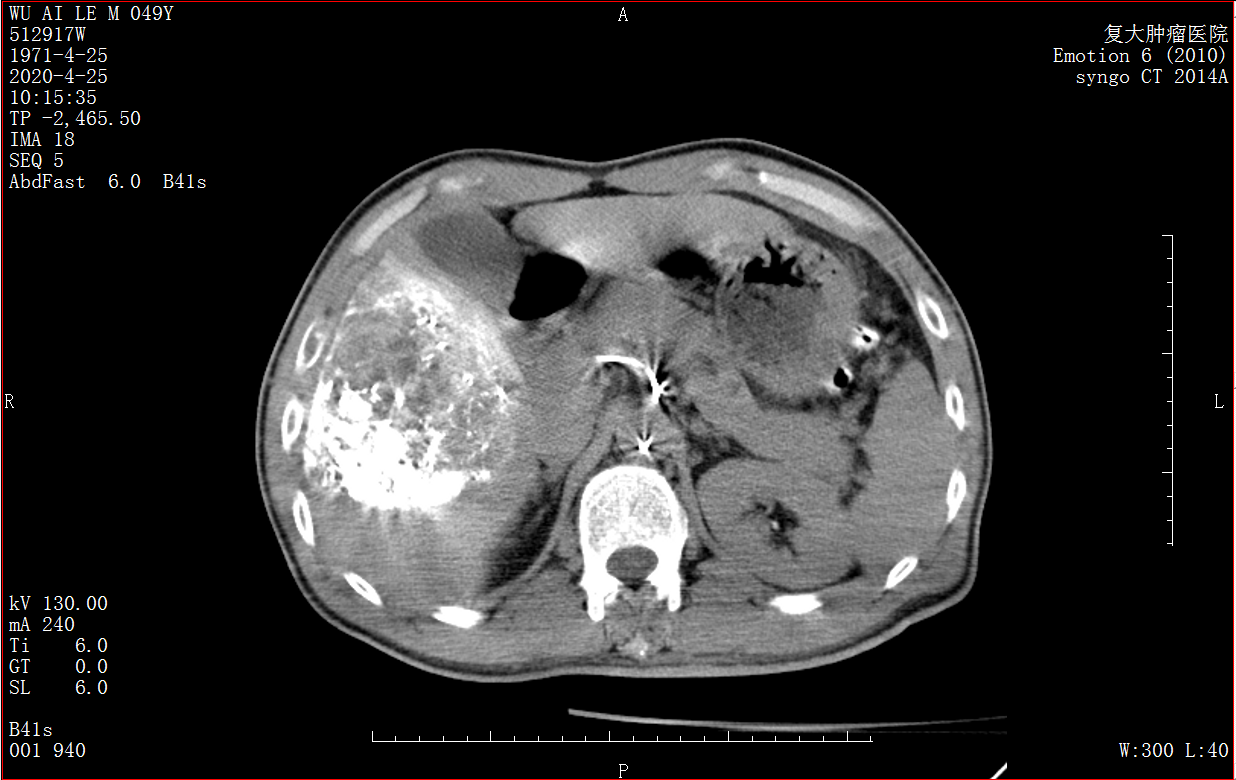
Immediately after the operation, MDCT shows that the embolization agent is located in the liver tumor, and that all the tumors are fully treated. The normal liver tissue is not affected during the procedure, indicating no damage to the normal liver tissue.